

Top companies trust Airbyte to centralize their Data









Sync your Data
Ship more quickly with the only solution that fits ALL your needs.
As your tools and edge cases grow, you deserve an extensible and open ELT solution that eliminates the time you spend on building and maintaining data pipelines
Leverage the largest catalog of connectors
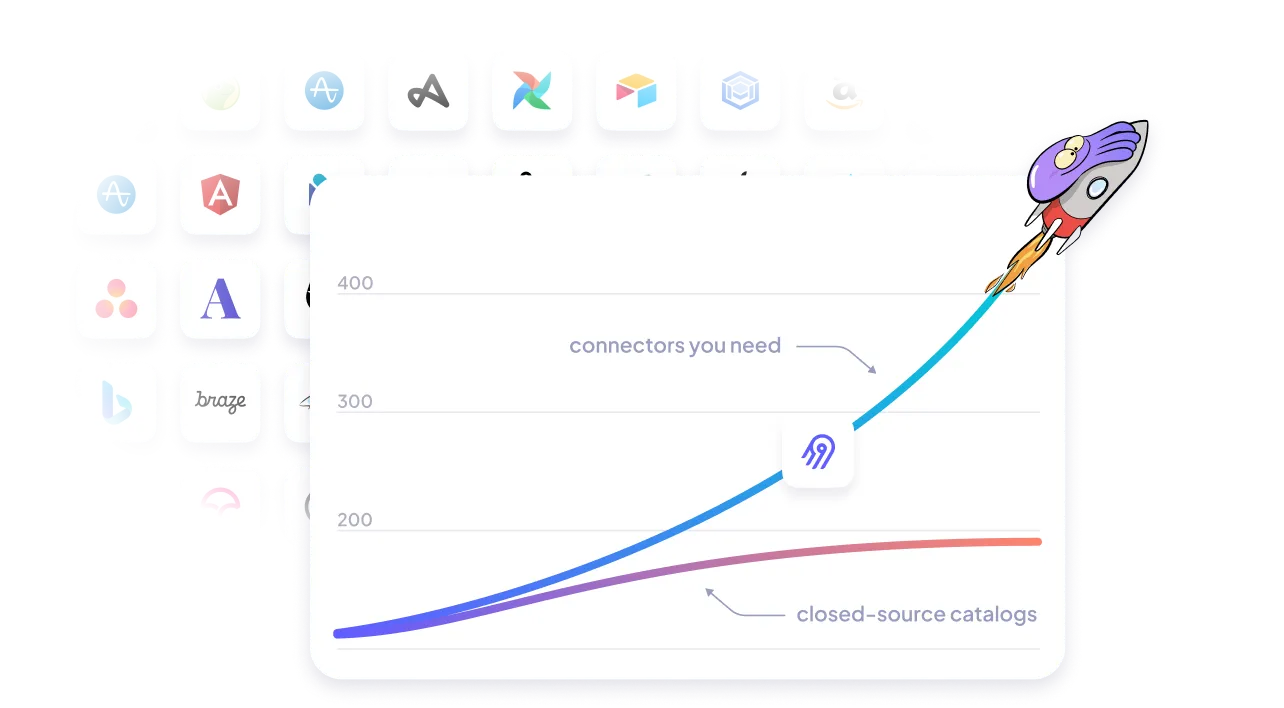
Cover your custom needs with our extensibility
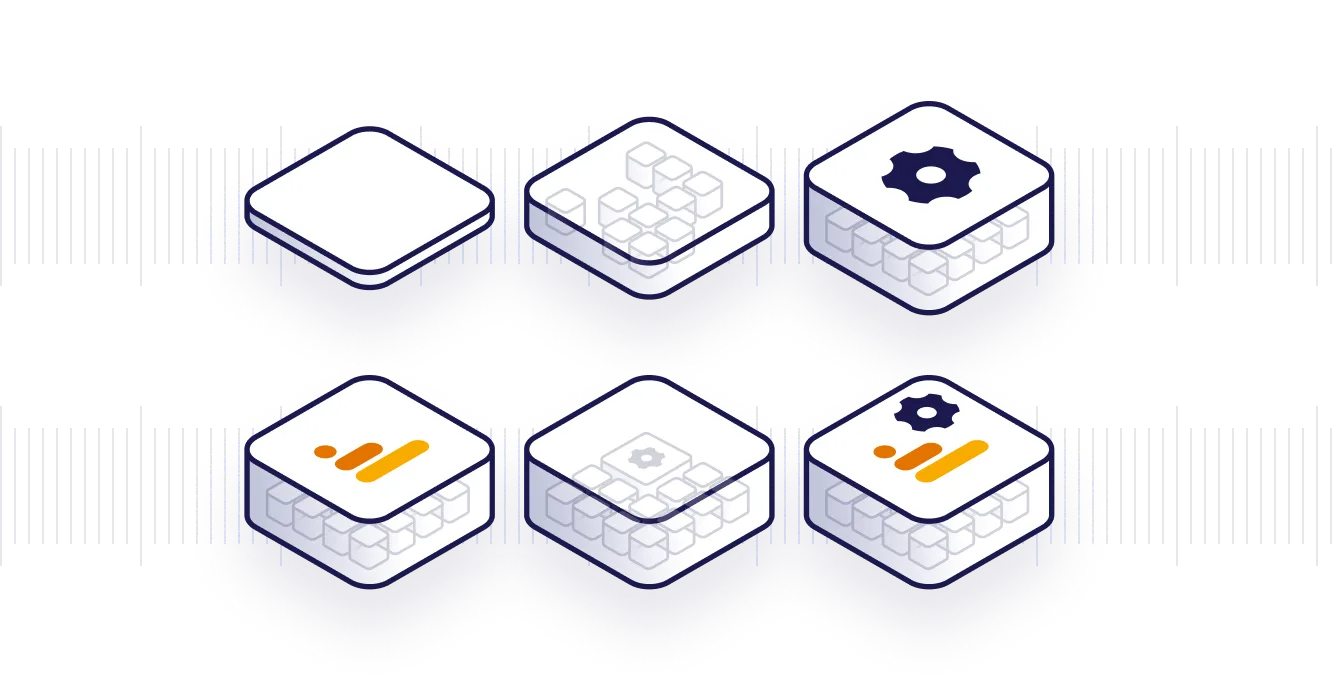
Free your time from maintaining connectors, with automation
- Automated schema change handling, data normalization and more
- Automated data transformation orchestration with our dbt integration
- Automated workflow with our Airflow, Dagster and Prefect integration
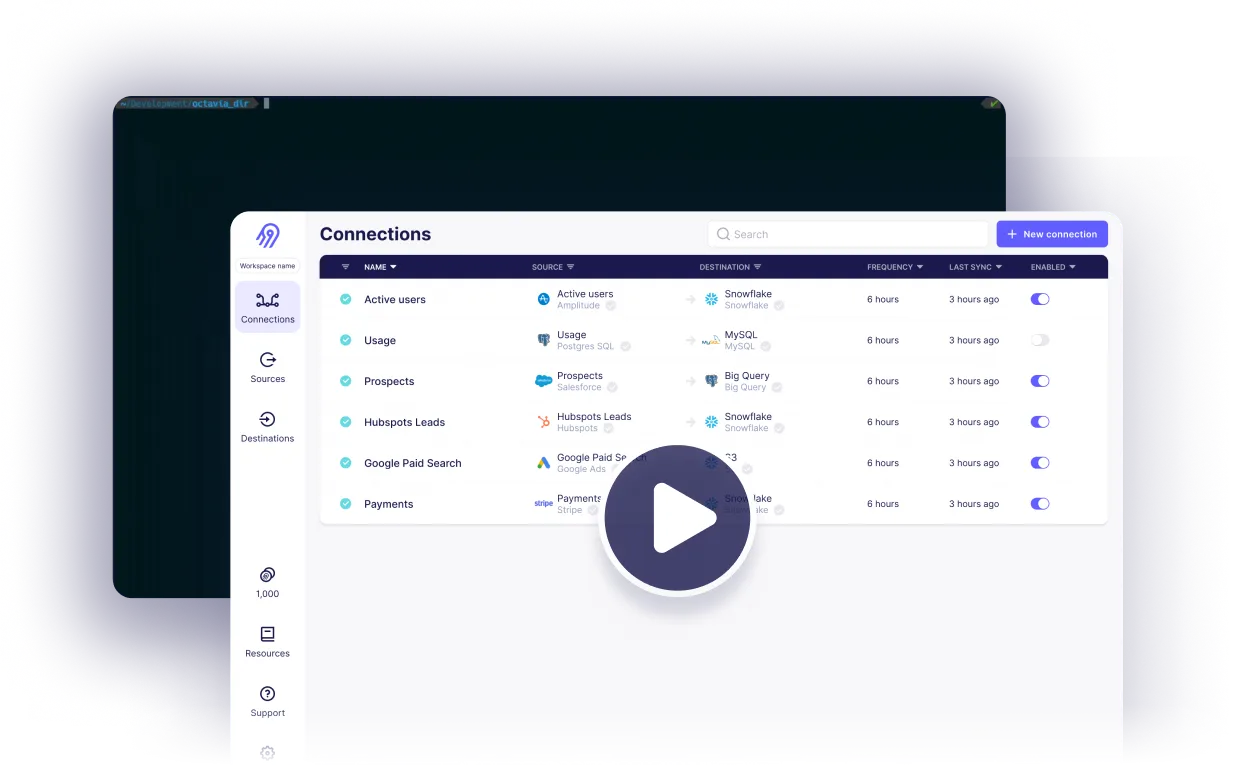
Reliability at every level
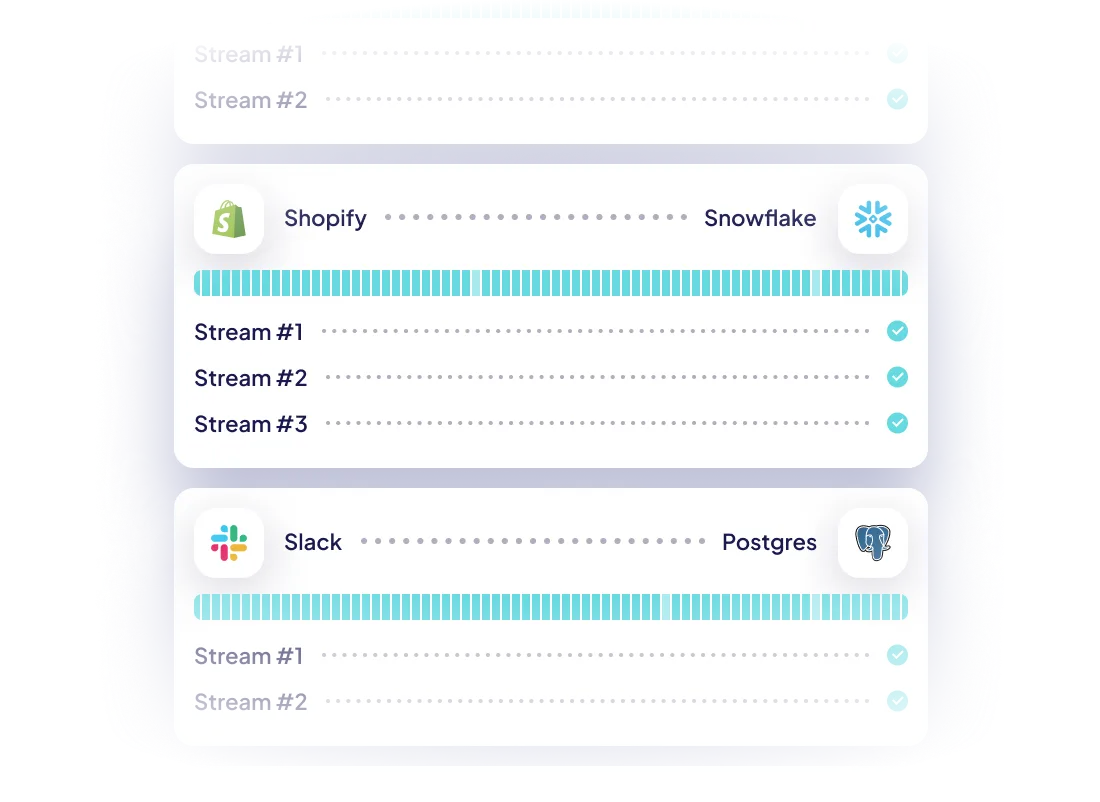


Airbyte Open Source
Airbyte Cloud
Airbyte Enterprise

Why choose Airbyte as the backbone of your data infrastructure?
Keep your data engineering costs in check
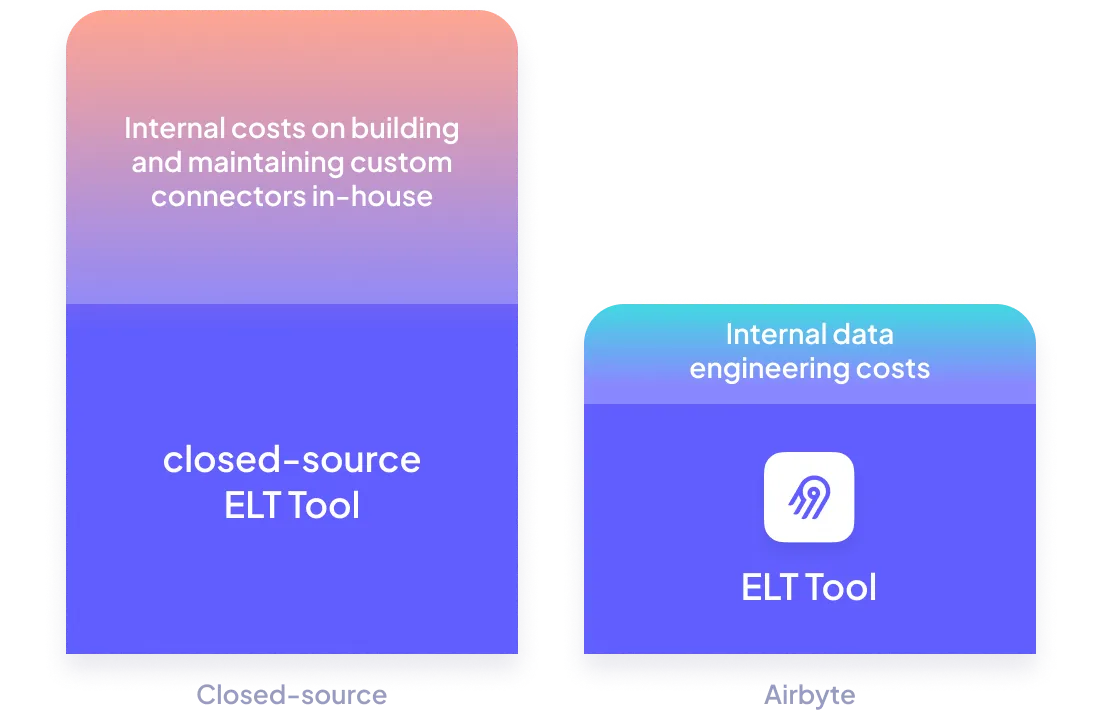
Get Airbyte hosted where you need it to be
- Airbyte Cloud: Have it hosted by us, with all the security you need (SOC2, ISO, GDPR, HIPAA Conduit).
- Airbyte Enterprise: Have it hosted within your own infrastructure, so your data and secrets never leave it.
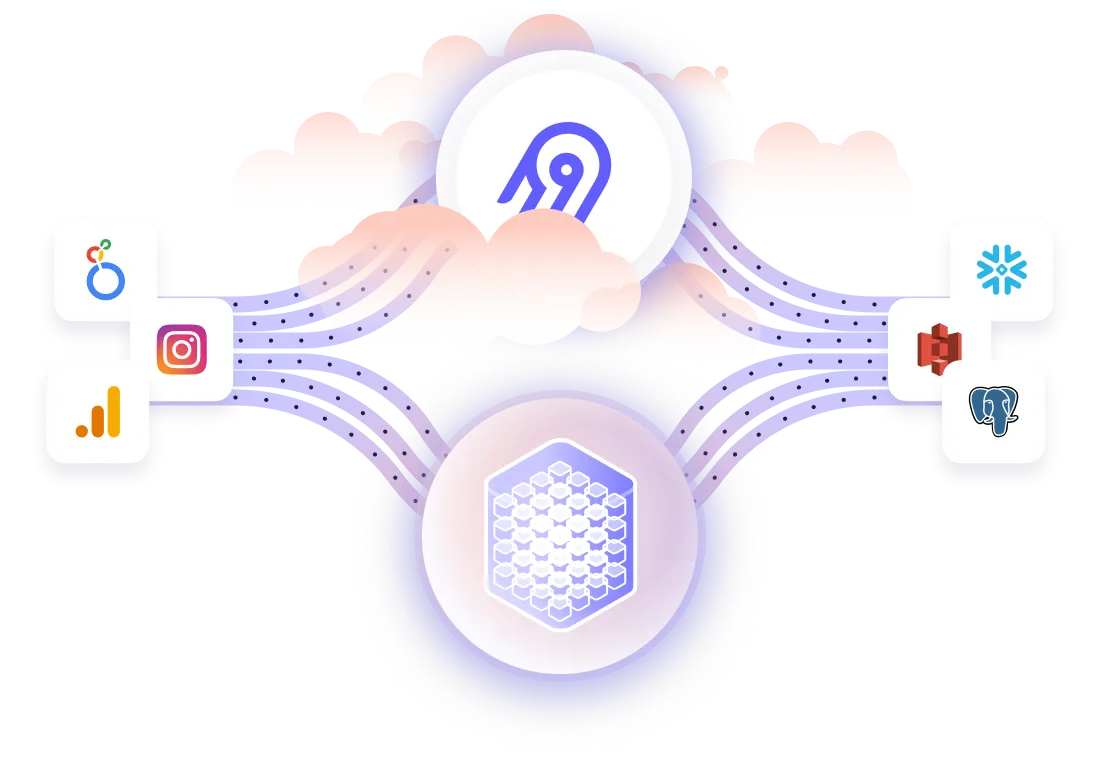
White-glove enterprise-level support
Including for your Airbyte Open Source instance with our premium support.
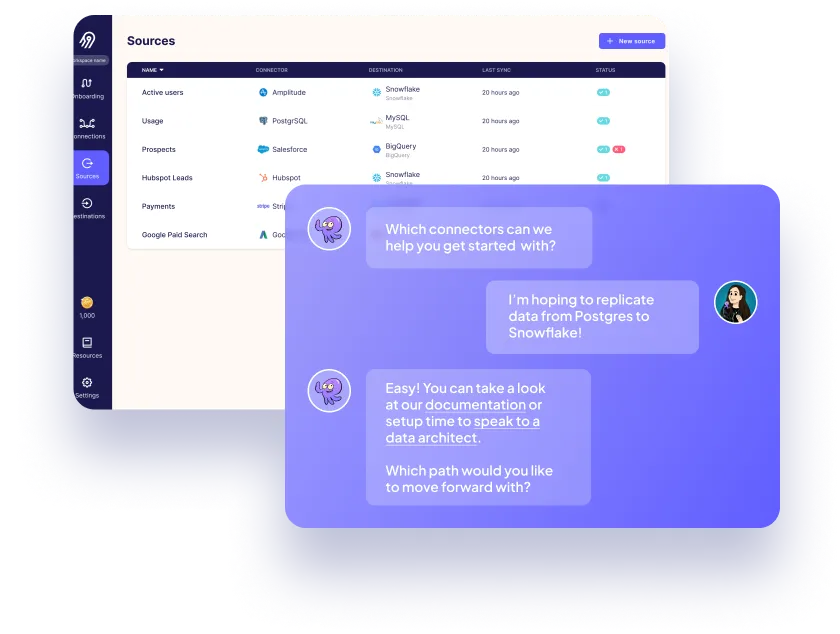

Fnatic, based out of London, is the world's leading esports organization, with a winning legacy of 16 years and counting in over 28 different titles, generating over 13m USD in prize money. Fnatic has an engaged follower base of 14m across their social media platforms and hundreds of millions of people watch their teams compete in League of Legends, CS:GO, Dota 2, Rainbow Six Siege, and many more titles every year.
Ready to get started?
FAQs
What is ETL?
ETL, an acronym for Extract, Transform, Load, is a vital data integration process. It involves extracting data from diverse sources, transforming it into a usable format, and loading it into a database, data warehouse or data lake. This process enables meaningful data analysis, enhancing business intelligence.
Twitter is owned by American company based in San Francisco, California, which permits users to microblog, post videos, and social networking service. Twitter is a popular social networking platform that permits its users to send and read micro-blogs of up to 280-characters well known as “tweets”. Basically, Twitter is needed to be at most 140 characters long, and these messages are generally broadcast to all the users on Twitter. Twitter rolled out a paid verification system and laid off thousands of content moderators for the troubled social media platform.
Google Sheets is a cloud-based spreadsheet tool that allows users to create, edit, and share spreadsheets online. It is a part of the Google Drive suite of productivity tools and is accessible from any device with an internet connection. Google Sheets offers a range of features that make it a powerful tool for data analysis, project management, and collaboration. Users can create and format spreadsheets, add formulas and functions, and create charts and graphs to visualize data. Google Sheets also allows users to collaborate in real-time, making it easy to work on projects with others. Users can share spreadsheets with specific people or make them public, and can control who has access to edit or view the document. Additionally, Google Sheets integrates with other Google tools such as Google Forms, allowing users to collect data and automatically populate it into a spreadsheet. Overall, Google Sheets is a versatile and user-friendly tool that can be used for a variety of tasks, from simple calculations to complex data analysis.
Twitter's API provides access to a wide range of data, including:
1. Tweets: The API allows access to all public tweets, as well as tweets from specific users or containing specific keywords.
2. User data: This includes information about individual Twitter users, such as their profile information, follower and following counts, and tweet history.
3. Trends: The API provides access to real-time and historical data on trending topics and hashtags.
4. Analytics: Twitter's API also provides access to analytics data, such as engagement rates, impressions, and reach.
5. Lists: The API allows access to Twitter lists, which are curated groups of Twitter users.
6. Direct messages: The API provides access to direct messages sent between Twitter users.
7. Search: The API allows for advanced search queries, including filtering by location, language, and sentiment.
8. Ads: Twitter's API also provides access to advertising data, such as campaign performance metrics and targeting options.
Overall, Twitter's API provides a wealth of data that can be used for a variety of purposes, from social media monitoring to marketing and advertising.
What is ELT?
ELT, standing for Extract, Load, Transform, is a modern take on the traditional ETL data integration process. In ELT, data is first extracted from various sources, loaded directly into a data warehouse, and then transformed. This approach enhances data processing speed, analytical flexibility and autonomy.
Difference between ETL and ELT?
ETL and ELT are critical data integration strategies with key differences. ETL (Extract, Transform, Load) transforms data before loading, ideal for structured data. In contrast, ELT (Extract, Load, Transform) loads data before transformation, perfect for processing large, diverse data sets in modern data warehouses. ELT is becoming the new standard as it offers a lot more flexibility and autonomy to data analysts.




















